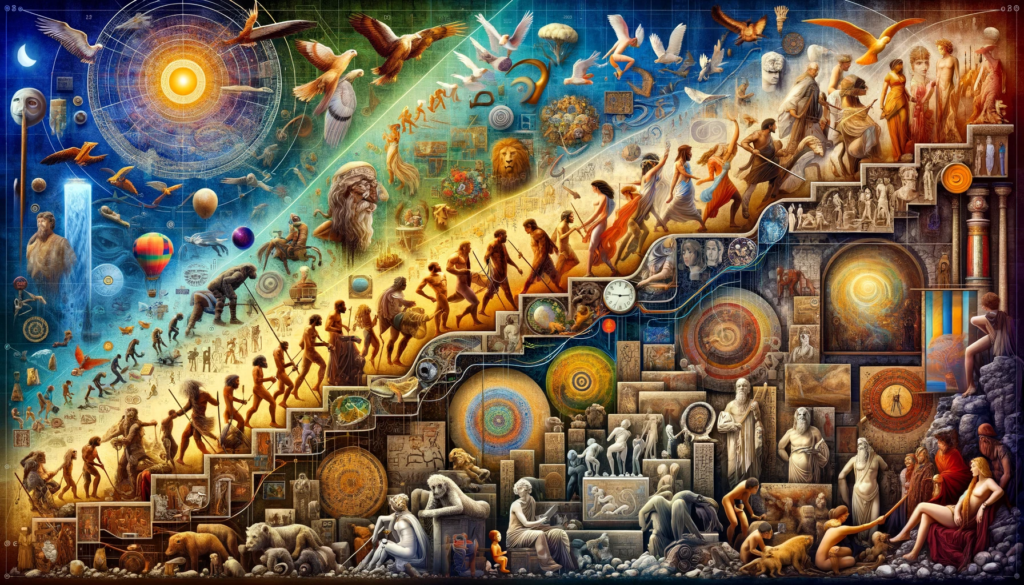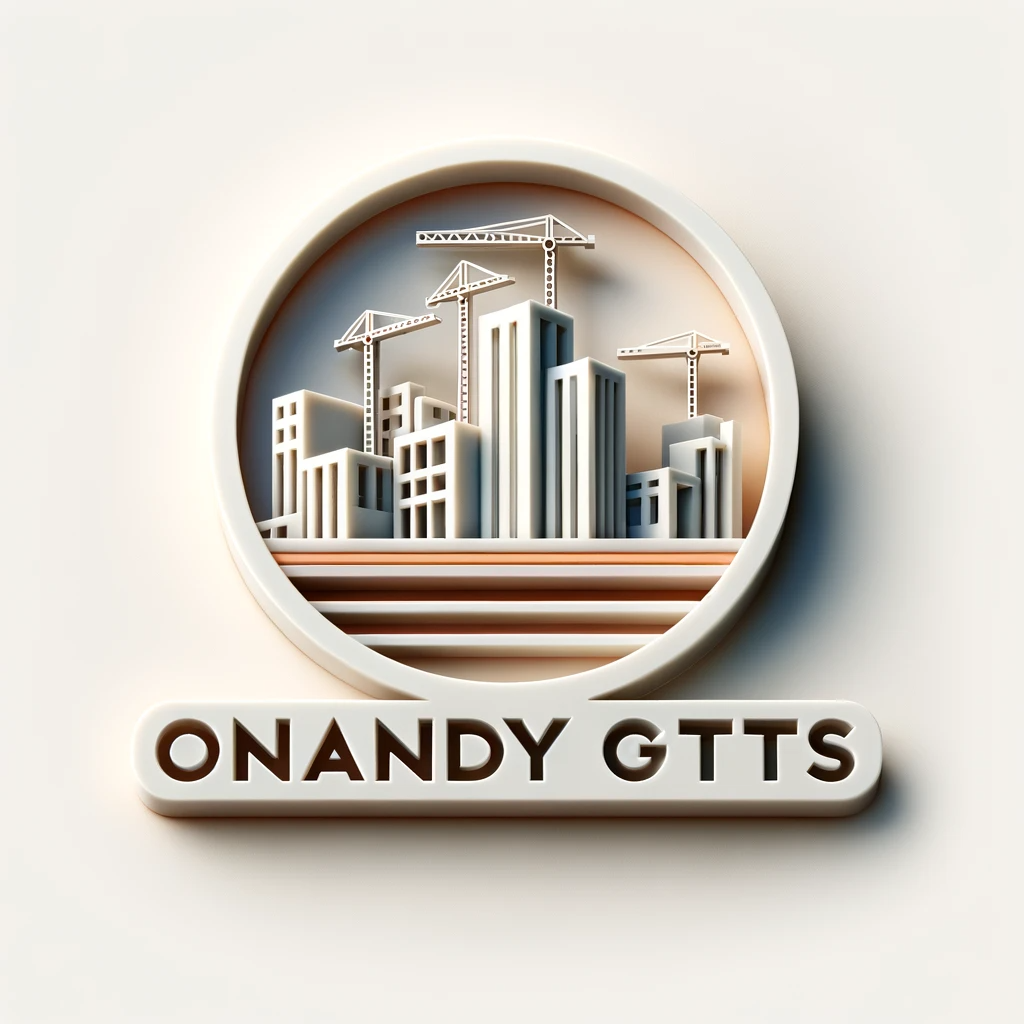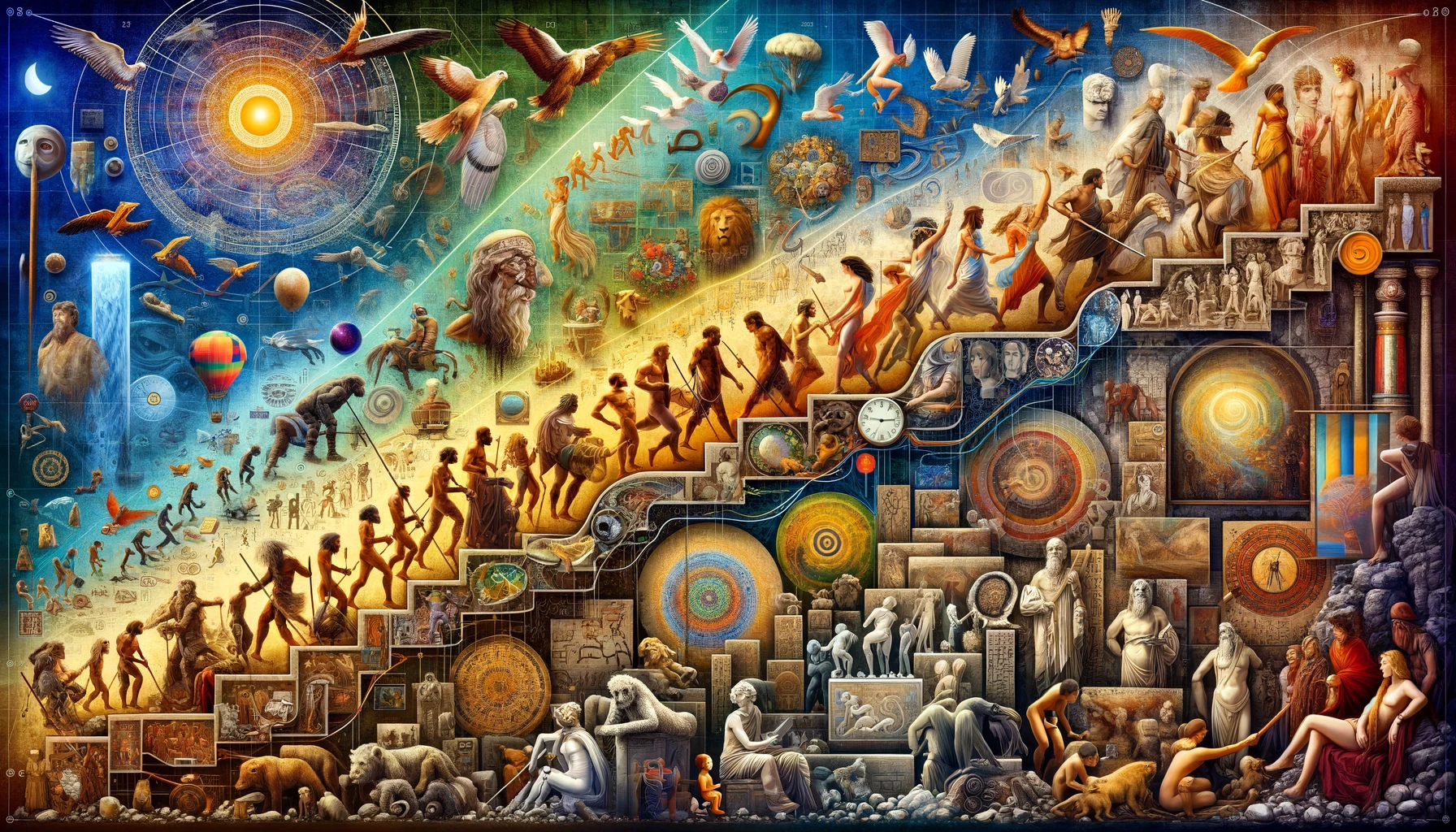“The Dawn of Creativity: Art in the Prehistoric Era”
The earliest forms of human creativity can be traced back to the Prehistoric Era, with art emerging as a powerful tool for communication long before the invention of writing. The primitive man expressed his experiences and emotions on the walls of caves through simplistic drawings known as cave paintings. These artistic endeavors were not just mere doodles; they were detailed depictions of hunting expeditions, animal life, natural phenomenons, and even celestial bodies. Evolving over thousands of years, these crude precursors to what we now know as art served as an important window into understanding ancient cultures. Transitioning from the Paleolithic period to the Neolithic period brought about significant changes in human lifestyle and consequently in artistry. As humans began settling down and adopting agricultural practices, their artwork reflected this shift. Detailed carvings and sculptures surfaced during this time – an indication that people had more leisure time to devote to creating intricate artwork. Megaliths or large stone structures became prominent features of Neolithic artistry, symbolizing community cooperation and showcasing human mastery over natural elements. The evolution of prehistoric art was not linear but was largely influenced by geographical location, available resources, and cultural beliefs. For instance, European prehistoric artwork predominantly consisted of cave paintings while African prehistory was deeply characterized by rock carvings or petroglyphs. Despite these regional differences, one commonality across all types of prehistoric art is their communicative function. They reveal a fascinating narrative about our ancestors’ lives – their fears, hopes, beliefs, rituals – providing invaluable insights into humanity’s primal instincts and its ability to transform raw materials into expressive symbols.

“Symbolism and Spirituality: The Role of Art in Ancient Civilizations”
As human societies transitioned into organized civilizations, the role of art evolved significantly. No longer was art merely a reflection of day-to-day life; it became deeply intertwined with spirituality and symbolism, serving as an essential tool to express religious beliefs and societal hierarchies. In ancient Egypt, for instance, art played a critical role in showcasing the divine status of pharaohs and deities. Detailed murals adorned the walls of tombs illustrating scenes from the afterlife, while monumental structures like pyramids stood as symbols of power and immortality. The use of specific colors, shapes and sizes all bore symbolic meanings that were integral to the Egyptian understanding of cosmology. Meanwhile, across the continent in ancient Greece, artwork took on a different form but retained its symbolic function. Greek art placed high emphasis on humanism – portraying gods and humans in idealized forms that epitomized perfection. The Greeks used sculptures to not only represent their gods but also to commemorate heroes and victorious athletes. These sculptures were often anatomically precise, symbolizing knowledge and appreciation for human form and anatomy. Greek pottery also served as significant canvases where mythological tales were narrated through detailed illustrations. Moving further east to India during the same period reveals yet another dimension of artistic evolution. Here, spirituality played a profound role in influencing artwork. Intricate carvings on temple walls depicted various deities along with narratives from sacred texts like Vedas and Puranas. Even architectural designs held deep symbolic meanings – circular layouts represented endless cycles of birth-rebirth according to Hindu philosophy while vertical structures symbolized spiritual ascension towards enlightenment in Buddhist temples. This fusion of aesthetics with spirituality is testament to how ancient societies used art as a medium to translate abstract concepts into tangible forms without losing their inherent meaning or essence.
“Intricate Craftsmanship: Understanding Classical Greek and Roman Art”
As we delve deeper into the evolution of artwork, it becomes crucial to understand the progression that took place during the classical period of Greek and Roman art. This era marked a significant shift from symbolic representations to intricate craftsmanship and realistic depictions. The Greeks, particularly known for their artistic prowess, introduced a novel approach whereby art was no longer solely about divine portrayal or storytelling but rather an exploration of human aesthetics and form. Transitioning into Roman times, it is evident that Romans were greatly influenced by the Greek’s emphasis on naturalism and perfection. However, they took this inspiration and made it uniquely their own by introducing innovations in techniques and materials used. For example, Romans mastered the use of concrete which allowed them to build massive structures like amphitheaters, aqueducts, baths, and even roads. They also pioneered new genres in painting such as landscape and still life. Perhaps one of the most significant contributions from Roman art is their intricate mosaics – these pieces often portrayed elaborate scenes from daily life or mythology with great attention to detail. The last paragraph will highlight how these advancements in craftsmanship were not just aesthetic additions but reflected deeper cultural shifts within these societies. In Greek society for instance, the emphasis on realism mirrored their growing fascination with human potential – physical strength, intellectual capacity and moral virtue. Similarly in Rome, expansive architectural projects signified their expanding empire while detailed mosaics celebrated prosperity brought about by trade connections across Mediterranean world. Thus beneath its beauty and grandeur, classical Greek and Roman art serve as a historical window into societal values of this remarkable epoch in human history.
“Religious Narratives: The Influence of Christianity on Medieval Art”
As we traverse the timeline of art history, we encounter the Middle Ages – a period heavily influenced by the rise of Christianity. This era is characterized by religious narratives that dominated artistic themes and styles. After the fall of Rome in 470 AD, Europe entered what was known as the Dark Ages where chaos and instability reigned. However, amidst this turmoil, one thing remained constant – the church. The church became a haven for scholars and artists alike, fostering a unique blend of art that served to educate and inspire devotion amongst its followers. Transitioning into this new era, it’s important to realize how artists shifted their focus towards depicting biblical stories and holy figures. From illuminated manuscripts to grand cathedrals adorned with stained glass windows, art became an essential tool for promoting Christian teachings. Artists paid utmost attention to symbolism and detail, with each color, figure, or object carrying a specific spiritual meaning. Moreover, stylistically speaking, there was a distinct departure from the naturalism of classical Greek and Roman art towards more abstract representations. These artworks were less about capturing physical realism but rather aimed at evoking emotional responses through their exaggerated forms and vibrant colors. While tracing these changes in artistic style during the medieval period, it’s equally crucial to recognize how this shift mirrored broader societal transformations. As Christianity gained prominence across Europe, it effectively shaped social norms and cultural practices which were subsequently reflected in artwork produced during this time. The emphasis on religious narratives underscored the Church’s pervasive influence while also serving as testament to people’s profound faith during times of uncertainty. Artists no longer sought inspiration from human aesthetics or powerful empires but found it within sacred scriptures instead – ultimately signifying how deeply interwoven religion had become with everyday life during the Middle Ages.
“Human Emotion and Realism: A Study of Renaissance Art”
As we continue our journey through the evolution of artwork, we arrive at the Renaissance – a period typically referred to as the ‘rebirth’ of art and culture. This era, spanning from the 14th to 17th centuries, saw a significant shift from the religious narratives prevalent in Medieval art to a renewed emphasis on human emotion and realism. Artists like Leonardo da Vinci, Michelangelo, and Raphael began to explore innovative techniques that allowed for more accurate depictions of people and nature. This was a clear departure from the abstract representation style dominant during the Middle Ages, indicating an inspiring return to naturalism. This movement towards realism was not only about capturing physical accuracy but also about portraying genuine human emotions. For instance, consider Leonardo da Vinci’s iconic painting – The Last Supper. In this masterpiece, da Vinci meticulously illustrates each apostle’s unique reaction upon hearing Jesus declare that one amongst them would betray him. It is this level of detail and emotional depth that distinguishes Renaissance art; it aimed to tell stories not just through subjects but also their expressions and body language. The shift towards realism in Renaissance art didn’t occur in isolation; instead, it reflected broader societal changes during this time. The era was characterized by significant advancements in science and philosophy which encouraged a heightened interest in human potential and individuality. This newfound focus on understanding humanity extended into artwork as well, leading artists to explore more realistic styles that honored human complexity rather than idealizing divine figures or promoting religious teachings. Thus, just as with previous eras, the transformation of artistic style during the Renaissance simultaneously mirrors and embodies its contemporary societal shifts – showcasing yet again how tightly intertwined art remains with its historical context.
“Art as Protest: An Examination of Baroque and Rococo Styles”
As we press forward in our exploration of the evolution of art, we pivot from the Renaissance to a period characterized by its grandeur and drama – the Baroque era. Spanning from the late 16th to the mid-18th century, Baroque artwork broke away from the balanced compositions and lifelike accuracy of its predecessor. Instead, it embraced contrast, movement, and emotional intensity as tools for storytelling. This deviation was not accidental but rather a calculated reaction against the restrained naturalism of Renaissance art. Artists such as Caravaggio and Bernini led this stylistic rebellion, producing works that were extravagant in detail and designed to evoke powerful emotional responses. Transitioning into the early 18th century, a new style known as Rococo began to emerge. While retaining some elements of Baroque’s grandiosity, Rococo art introduced an airier aesthetic characterized by pastel colors, intricate details, and playful themes. This can be seen in Jean-Honoré Fragonard’s infamous piece “The Swing,” where soft colors blend seamlessly with elaborate designs to create an atmosphere of flirtatious frivolity. Despite this seemingly light-hearted approach though, Rococo artists utilized their craft as subtle social commentary – often satirizing aristocratic indulgence amidst widespread societal inequality. Reflecting more broadly on both eras reveals another critical aspect – art was being used increasingly as a form of protest. During these periods of significant political change and religious tension across Europe, artists found ways to voice dissent without outright defiance. They manipulated style and subject matter to challenge established norms subtly or highlight societal injustices. For instance, Caravaggio’s use of tenebrism drew attention to issues frequently ignored during his time while Fragonard’s delicate depictions subtly critiqued elite extravagance. Thus whether through dramatic contrasts or nuanced satire, both Baroque and Rococo artists leveraged their craft for discourse – pushing boundaries not just artistically, but socially and politically as well. This evolution underscores yet again the enduring power of art to reflect, challenge, and shape the world around it.
“Revolution and Romanticism: Exploring 19th Century European Art Movements”
As we continue our journey into the evolution of art, we arrive at a period known as the Romanticism era, spanning the late 18th to mid-19th century. Contrary to its name, Romanticism was not centered around romantic love but rather an emphasis on emotion and individualism. It served as a counterpoint to the intellectual rigidity of the Enlightenment period that immediately preceded it. The Romantic movement celebrated imagination over reason, nature over industry, and revolutionary spirit over established order. Artists like Eugène Delacroix and Francisco Goya embodied these principles in their works, using dramatic scenes and expressive brushwork to communicate intense emotional states. Transitioning into the mid-19th century, we encounter a pivotal moment in art history with the advent of Realism. This movement emerged as a direct response to Romanticism’s subjective perspective and sought instead to represent life with uncompromising truthfulness. Rejecting idealized beauty and melodramatic emotionality, Realist artists such as Gustave Courbet focused on depicting everyday scenarios and ordinary people often overlooked by traditional art circles. They used unembellished detail and unsentimental subject matter to present a stark contrast against previous art movements. The shift from Romanticism’s emotional intensity to Realism’s objective representation reveals an interesting dynamic within 19th-century European art – one where stylistic revolution became a recurring theme. While both movements differed vastly in approach, they shared a common thread of rebellion against established norms. Romantics rejected Enlightenment rationality for emotive expression while Realists challenged Romantic idealization with gritty reality. In this sense, each movement represented its own form of revolution – pushing back against constraint and tradition in pursuit of new artistic frontiers. Art was no longer just about aesthetic appeal; it had become a platform for challenging societal conventions and inciting change – encapsulating yet again how deeply interwoven art is with the social climate of its time.
“Challenging the Norms: The Emergence of Modernist Art”
As we venture further into the evolution of art, we now move towards the end of the 19th century and into the early 20th century. This period is marked by a radical shift in artistic expression with the advent of Modernism. Shattering previous conventions, Modernist artists sought to challenge traditional norms and redefine what art could be. Just as Romanticism was a reaction against Enlightenment rationality, and Realism against Romantic idealization, Modernism emerged from a desire to break away from past traditions. The industrial revolution, urbanization, and significant scientific advancements were key influencers in shaping this revolutionary movement. At its core, Modernist art reflected an obsession with newness and originality. It pushed boundaries by experimenting with form, color, space, and materials in ways previously unimagined. Artists like Pablo Picasso disrupted conventional perspectives with his Cubist works while Wassily Kandinsky explored abstract compositions that deviated entirely from representational art. Even architecture felt the winds of change as architects such as Le Corbusier embraced functional simplicity over ornamental excessiveness – championing what was termed as ‘machine aesthetics.’ These innovations weren’t just about novelty; they represented a profound shift in how artists perceived and interacted with their world. Stepping back from these developments, it becomes evident that Modernist art was not simply an artistic style but rather a mindset – one that dared to question established norms and explore untrodden paths. It embodied an era where change was rapid and relentless – where old structures were crumbling to make way for new ideas. Artists no longer saw themselves bound by tradition; instead they became pioneers charting their own course amidst an ever-evolving landscape of possibilities. And so continues our journey through the evolution of art – testament to humanity’s endless capacity for reinvention.
“Expression, Abstraction, and Pop Culture: Unpacking Post-Modernist Styles”
As we continue to traverse the timeline of art history, we arrive at the mid-to-late 20th century: an era marked by the advent of Postmodernism. This period witnessed a significant departure from the Modernist obsession with originality and novelty. Instead, Postmodern artists embraced a more cynical view, questioning the very concept of originality and often drawing heavily from past styles and popular culture. This gave rise to a rich tapestry of eclectic influences and mixed styles that defined Postmodern artwork. Artists like Andy Warhol took inspiration from consumer goods, advertisements, and celebrities, creating iconic pop art pieces that blurred the line between high art and popular culture. Meanwhile, abstract expressionists such as Jackson Pollock veered towards non-representational forms, focusing more on emotion over depiction. The aim was not to create an accurate representation but to elicit an emotional response in the viewer through colors and shapes. Architecturally too, postmodernists like Robert Venturi rejected the stark simplicity of Modernist design, infusing their structures with historic references, decorative elements, and even humor. In exploring these various trends within Postmodernism , it becomes clear that this movement wasn’t merely about artistic style but represented a broader cultural shift in how society perceived itself. It was an era where everything was open for reinterpretation – where established norms were not only questioned but poked fun at; where high culture merged with popular culture; where abstraction met reality head-on. Thus continues our exploration into art’s evolution – serving as a mirror reflecting society’s ongoing transformation.
“Digital Revolution: How Technology is Shaping Contemporary Visual Arts”.
As we delve further into the evolution of artwork, we cannot overlook the profound impact that digital technology has had on contemporary visual arts. The advent of computers and the internet in the late 20th century brought about a digital revolution, completely transforming how artists create and share their work. This shift was as groundbreaking as the invention of perspective during the Renaissance or the emergence of photography in the 19th century. Digital tools have enabled artists to push beyond traditional boundaries, offering new ways to experiment with color, form, and composition. Software like Adobe Photoshop and Illustrator allows for unprecedented control over every pixel, enabling artists to manipulate images in ways never before possible. Similarly, 3D modeling software has given sculptors and installation artists new avenues for creating complex structures that would be nearly impossible using traditional methods. Moreover, digital art isn’t confined to two dimensions or static displays; it encompasses dynamic forms such as virtual reality experiences and interactive installations. Beyond creation, technology has also dramatically reshaped how art is shared and consumed. Through social media platforms like Instagram, artists can instantly share their work with a global audience — something unimaginable just a few decades ago. Digital galleries and online exhibitions have democratized access to art by breaking down geographical boundaries while redefining what an “exhibition” can be. Thus, our journey through art’s evolution reveals that technology hasn’t merely changed how art is made but has fundamentally altered our relationship with it.

